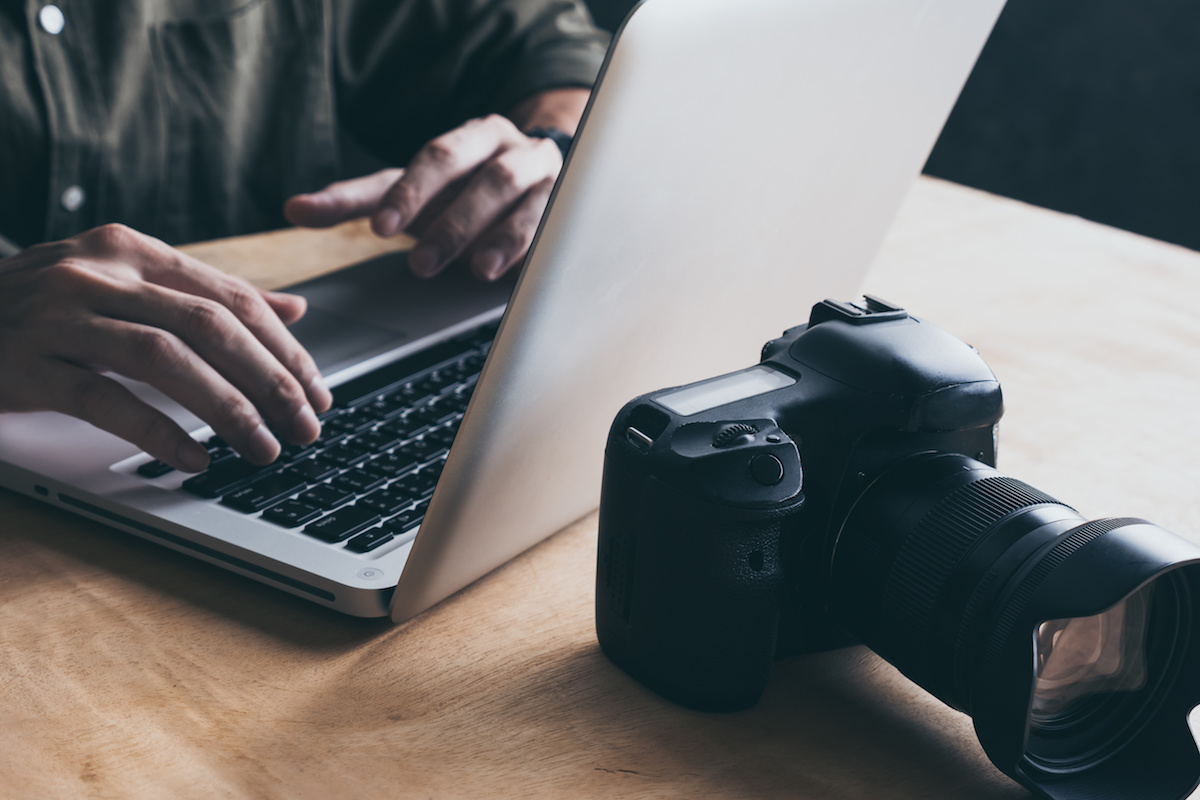If you’re passionate about photography and eager to share your work with a global audience, Shutterstock is a fantastic platform to consider. Getting your photos approved can sometimes feel like a challenge, especially if you’re new to their process. But don’t worry! Understanding how their submission system works and what they’re looking for can make a big difference. In this guide, we’ll walk through the submission journey step-by-step, so you can upload with confidence and increase your chances of approval. Let’s start with the basics of how to submit your photos to Shutterstock and what to expect along the way.
Understanding Shutterstock’s Content Guidelines and Requirements

Before you hit that upload button, it’s crucial to familiarize yourself with Shutterstock’s content guidelines and requirements. They have specific standards to ensure the quality and legality of images on their platform. First, your photos need to be technically excellent—sharp, well-exposed, and free of noise or distracting elements. But beyond technical quality, Shutterstock emphasizes originality and market relevance. Your images should be unique and suited to commercial use, whether for advertising, websites, or print.
Here are some important guidelines to keep in mind:
- Legal considerations: Make sure you own the rights to all elements in your photo. If there are recognizable people, you need model releases; for private property, property releases might be necessary.
- Content restrictions: Shutterstock doesn’t accept images with offensive, violent, or illegal content. Also, avoid images that include copyrighted logos or trademarks unless you have permission.
- Technical specs: Files should be at least 4 megapixels, in JPEG format, and saved in RGB color space. Avoid heavily compressed or watermarked images.
- Metadata: Providing clear, accurate titles, descriptions, and keywords helps your photos get discovered. Use relevant keywords that genuinely describe your image.
Getting these basics right not only helps your images pass the review process faster but also boosts their visibility once approved. By understanding and adhering to these guidelines, you’re setting yourself up for success in the Shutterstock marketplace.
Preparing Your Photos for Submission to Increase Approval Chances

Getting your photos approved on Shutterstock can sometimes feel like a game of chance, but the truth is, preparation is key. Before you even hit the upload button, taking a little extra time to prepare your images can make all the difference in increasing your approval rate.
First, always start with high-quality images. Shutterstock is known for its professional standards, so your photos should be sharp, well-lit, and free of noise or grain. Use a good camera or smartphone with a high-resolution sensor, and pay attention to focus and exposure. Remember, blurry or poorly lit images are more likely to be rejected.
Next, consider the composition. Think about the rule of thirds, leading lines, and framing to create visually appealing shots. Cluttered or distracting backgrounds can detract from the main subject, so tidy up the scene or crop accordingly. If you’re photographing people, ensure you have model releases signed if necessary, and that the images are model-release ready.
Another important aspect is image format and size. Shutterstock prefers images in JPEG format with a minimum of 4 megapixels, but higher resolutions are better. Save your images in the sRGB color space for accurate color representation. Also, avoid heavily compressed or overly edited images—keep edits natural and subtle.
Before submitting, review your photos for any technical issues: check for dust spots, sensor spots, or spots caused by lens flare. Use editing software to clean up any imperfections. Remember, the clearer and more polished your images are, the higher their chances of approval.
Finally, ensure your photos meet Shutterstock’s content guidelines. Avoid images with copyrighted trademarks, recognizable private property, or sensitive content. Also, steer clear of images with watermarks or branding that aren’t yours. Preparing your photos with these considerations in mind helps streamline the review process and boosts your chances of getting approved quickly.
Best Practices for Uploadting and Tagging Your Photos

Once your photos are ready, the next step is uploading and tagging them correctly. This phase is crucial because good tagging helps Shutterstock’s reviewers and future buyers find your images easily.
Start with a clean, organized workflow. Before uploading, double-check your images for technical quality, and have your titles, descriptions, and tags ready. Think about what keywords someone might use to search for your photo—be specific, but also include broader terms when appropriate.
When uploading, use the platform’s batch upload feature if you have multiple images. This saves time and ensures consistency in how your images are processed. After upload, fill out the metadata carefully:
- Title: Make it descriptive and straightforward. For example, instead of “Picture1,” use “Sunset over Mountain Lake.”
- Description: Provide context or details about the scene, mood, or subject. Mention locations, colors, or activities involved.
- Tags: Use relevant keywords that accurately describe your photo. Think about different ways people might search for similar images. Include specific terms like “mountain lake,” “sunset,” “nature,” as well as broader terms like “landscape” or “outdoor.”
Here are some best practices for tagging:
- Use all available tags: Maximize the number of relevant keywords without overstuffing. Shutterstock allows up to 50 tags—use them wisely.
- Be specific: Instead of generic tags like “flower,” specify the type, such as “rose,” “orchid,” or “tulip.”
- Include variations: Use synonyms or related terms to broaden searchability, like “car” and “automobile.”
- Avoid spammy tags: Don’t add irrelevant or misleading keywords just to get more views. This can hurt your reputation and lead to rejection.
Lastly, preview your upload before submitting. Make sure all metadata is accurate, free of typos, and truly reflective of your image. Well-tagged images not only get approved faster but also attract more views and potential buyers. Remember, clear, organized, and thoughtful submission practices set you up for success in the Shutterstock contributor community.
Common Reasons Photos Are Rejected and How to Avoid Them
Getting your photos approved on Shutterstock can sometimes feel like a challenge, especially if you’re not sure what reviewers are looking for. Understanding the common reasons why images get rejected is the first step toward improving your submissions and speeding up the approval process.
One of the most frequent reasons for rejection is poor image quality. Reviewers expect high-resolution photos with sharp focus, proper exposure, and minimal noise. If your images are blurry, pixelated, or overly dark or bright, they’re likely to be rejected. To avoid this, always shoot with a good camera, use proper settings, and review your images carefully before submitting.
Another common issue is improper model or property releases. Shutterstock requires proof that you have permission to use identifiable people or private property in your photos. If you don’t have releases when needed, your images will be rejected. Make sure to obtain signed releases from all recognizable individuals or property owners, and keep these documents organized for easy submission.
Technical issues, such as watermarks, borders, or logos, are also a big no-no. Reviewers want clean, professional-looking images without any branding or distracting elements. Remove any watermarks or overlays, and ensure your photos are free of extraneous elements that don’t belong in a stock image.
Additionally, images that don’t meet Shutterstock’s content guidelines will be rejected. This includes photos with copyrighted material, offensive content, or images that are too similar to existing popular images. Make sure your content is original, appropriate, and aligns with Shutterstock’s standards.
To avoid these pitfalls:
- Always review Shutterstock’s contributor guidelines thoroughly.
- Use high-quality equipment and shoot in RAW if possible for maximum flexibility.
- Obtain necessary releases before submitting.
- Check your images for technical flaws and editing errors.
- Ensure your content is original and suitable for a broad audience.
By paying attention to these common rejection reasons and taking proactive steps, you’ll significantly increase your chances of getting your photos accepted quickly and smoothly.
Tips for Accelerating the Review and Approval Process
If you’re eager to see your photos published on Shutterstock, there are several strategies you can use to speed up the review process. While some factors depend on Shutterstock’s internal review times, implementing these tips can help ensure your images are processed as efficiently as possible.
1. Submit Well-Prepared Files: Before uploading, double-check your images for technical quality. Make sure they are high-resolution (at least 4MP), properly exposed, sharp, and free of noise or artifacts. Also, remove any watermarks, borders, or distracting elements. Well-prepared files reduce the chances of rejection and resubmission, saving time.
2. Organize Your Metadata: Proper titles, descriptions, and keywords are essential. Clear, relevant metadata helps reviewers understand your image content quickly, reducing the likelihood of questions or additional clarifications. Use descriptive keywords that accurately represent your photo to improve discoverability and review speed.
3. Include Necessary Releases: If your photo features recognizable people or private property, ensure you upload signed model or property releases at the time of submission. Having these documents ready and properly attached streamlines the review process.
4. Use the Correct Submission Category: Choosing the right category and keywords helps reviewers categorize your images correctly, speeding up approval. Take a moment to select the most appropriate category and fill in all relevant metadata fields accurately.
5. Submit in Batches: Instead of uploading sporadically, submit multiple high-quality images at once. This can help you stay active and build a portfolio, which may encourage faster processing over time as you establish a track record with Shutterstock.
6. Follow Up When Necessary: If your images are taking longer than usual to review, you can politely reach out to Shutterstock’s contributor support for updates. Sometimes, a gentle inquiry can help clarify delays and expedite the process.
7. Stay Updated on Guidelines: Shutterstock periodically updates its content and submission guidelines. Regularly reviewing these updates ensures your submissions stay compliant, preventing unnecessary delays or rejections.
Remember, patience is key. While these tips can help accelerate your review times, it’s normal for the process to take a few days. Consistently submitting high-quality, well-organized images will not only improve your approval rate but also help you build a strong portfolio that gets approved faster over time.
Final Checklist Before Submitting Your Photos to Shutterstock
Before hitting that submit button, it’s a good idea to run through a final checklist. This simple step can save you time in the review process and increase your chances of getting approved quickly. Think of it as your last-minute inspection to ensure everything is in top shape.
Here’s what to double-check:
- Image Quality: Is your photo sharp, well-exposed, and free of noise? Blurry or pixelated images are a quick rejection.
- Lighting and Colors: Are the lighting and color balance natural and appealing? Avoid overly dark or washed-out photos.
- Composition: Is your subject centered or thoughtfully placed? Check for distracting elements or clutter in the background.
- File Format and Size: Make sure your image is saved in JPEG format with a minimum of 4 MP (megapixels). Shutterstock prefers high-resolution images.
- Metadata: Have you added accurate and descriptive titles, keywords, and captions? Proper metadata helps your photo get discovered.
- Model and Property Releases: Do you have the necessary releases if your photo features recognizable people, private property, or trademarks?
- Copyright and Originality: Is your work original? Avoid using copyrighted material or stock images from other sources without permission.
Taking a few extra minutes to verify these points can make a big difference. Remember, Shutterstock’s review team looks for high-quality, compliant images that meet their standards. A polished submission not only speeds up approval but also enhances your reputation as a contributor.
Conclusion and Additional Resources for Shutterstock Contributors
Getting your photos approved and earning on Shutterstock is a journey that combines creativity, technical skills, and a good understanding of the platform’s requirements. By following the strategies we’ve discussed—from mastering keywording to maintaining image quality—you’re well on your way to building a successful portfolio.
Remember, patience is key. Sometimes, even the best photos need a little time to find their audience. Keep experimenting, learning from feedback, and updating your portfolio regularly. Over time, your images will start to gain traction, and your efforts will pay off.
For further help and to stay updated on best practices, check out these resources:
- Shutterstock Contributor Help Center — Official guidelines and tips.
- Shutterstock Blog — Inspiring stories and industry insights.
- Keywording Tips — Deep dive into effective keyword strategies.
- Creating High-Quality Photos — Techniques to boost your image quality.
- Become a Contributor — Start or grow your portfolio today.
Stay persistent, keep honing your skills, and enjoy the creative process. Happy shooting—and here’s to seeing your photos featured on Shutterstock soon!

